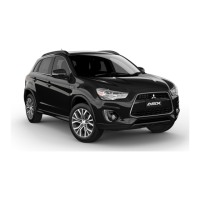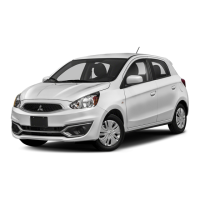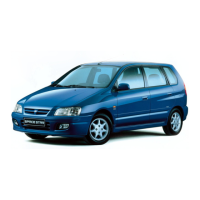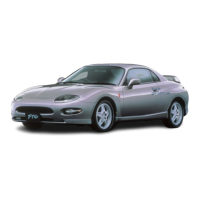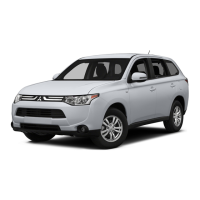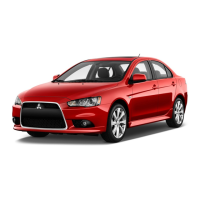NOTE
l
For vehicles equipped with the Auto Stop &
Go (AS&G) system, press the “AS&G OFF”
switch to deactivate the AS&G system and
prevent the engine from automatically stop-
ping before the battery is sufficiently charg-
ed.
Refer to “To deactivate” on page 6-18.
9. After the engine is started, disconnect
the cables in the reverse order and keep
the engine running for several minutes.
WARNING
l
If the battery has to be charged while fit-
ted in the vehicle, disconnect the vehicle
side negative (-) terminal connected to the
battery.
l
Keep sparks, cigarettes and flames away
from the battery because the battery may
produce an explosion.
l
Use adequate ventilation when charging
or using the battery in an enclosed space.
l
Remove all the caps before charging the
battery.
WARNING
l
Electrolyte is corrosive diluted sulphuric
acid.
If electrolyte (battery acid) comes into
contact with your hands, eyes, clothes and
the painted surface of your vehicle, it
should be thoroughly flushed with water.
If electrolyte gets in your eyes, flush them
with water immediately and thoroughly,
and get prompt medical attention.
NOTE
l
If the vehicle is put in motion without fully
charging the battery, it might cause the loss
of smooth engine operation and the anti-lock
brake warning lamp to illuminate.
Refer to “Anti-lock brake system (ABS)” on
page 6-36.
Engine overheating
When the engine is overheating, the informa-
tion screen in the multi-information display
will be interrupted and the engine coolant
temperature warning display will appear. Al-
so “ ” will blink.
If this occurs, take the following corrective
measures:
1. Stop the vehicle in a safe place.
2. Check whether steam is coming from the
engine compartment.
[If steam does not come from the engine
compartment]
With the engine still running, raise the
bonnet to ventilate the engine compart-
ment.
NOTE
l
For vehicles equipped with the Auto Stop &
Go (AS&G) system, press the “AS&G OFF”
switch to deactivate the AS&G system be-
fore stopping the vehicle.
Refer to “To deactivate” on page 6-18.
[If steam is coming from the engine
compartment]
Stop the engine, and when the steam
stops, raise the bonnet to ventilate the
engine compartment. Restart the engine.
WARNING
l
Do not open the bonnet while steam is
coming from the engine compartment. It
could cause steam or hot water to spurt
out, causing burns. Hot water could spurt
out even when there is no steam coming
out, and some parts will be very hot. Be
very careful when opening the bonnet.
l
Be careful of hot steam, which could cause
the cap on the engine reserve tank to blow
off.
Engine overheating
8-04
OGAE19E1
For emergencies
8

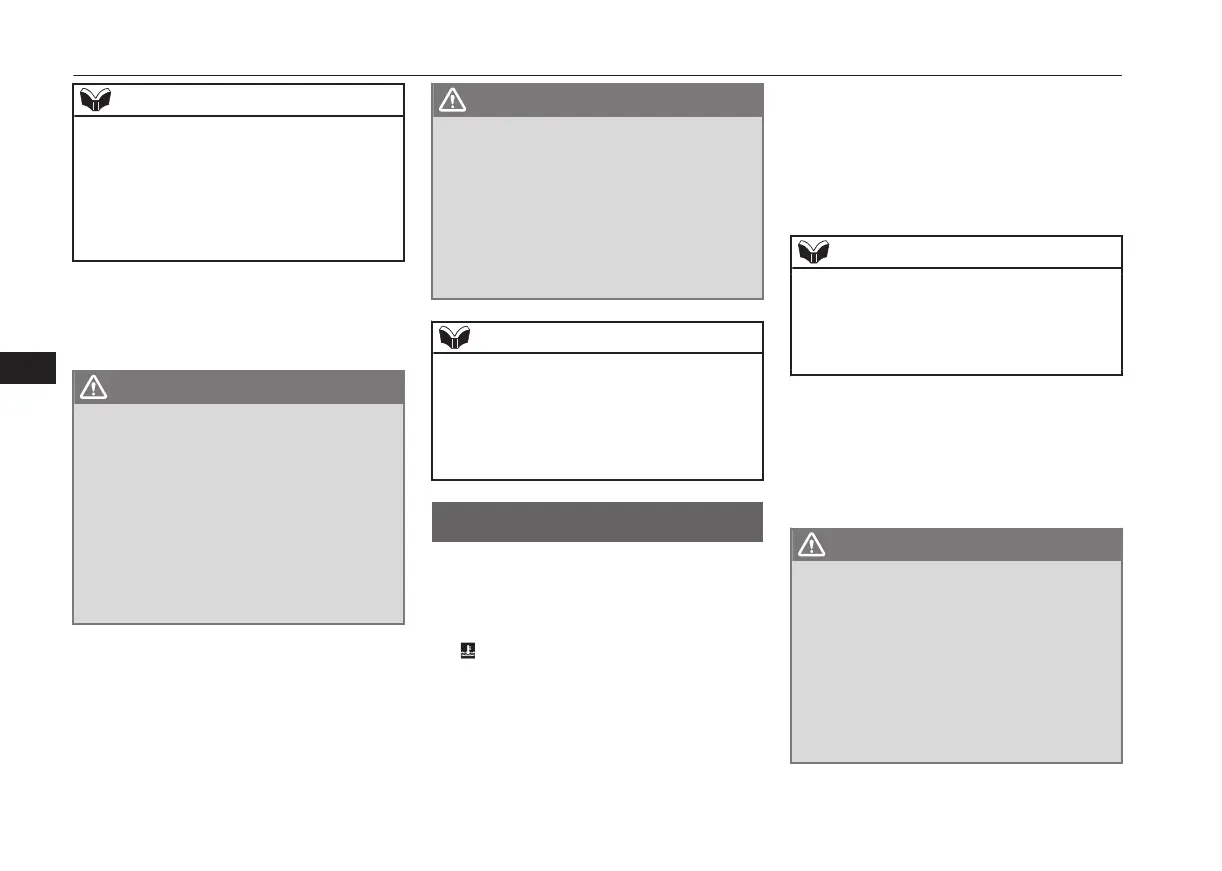